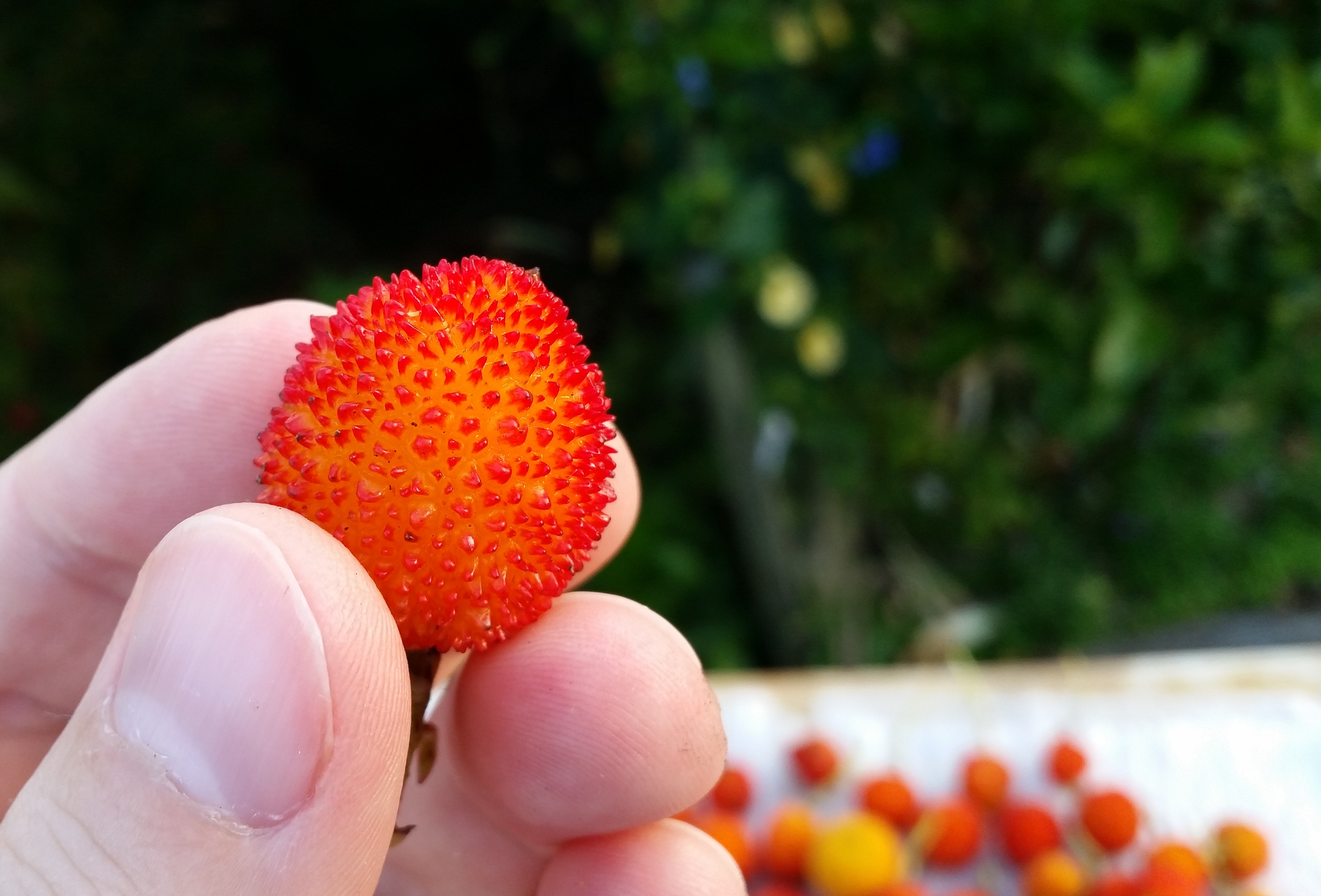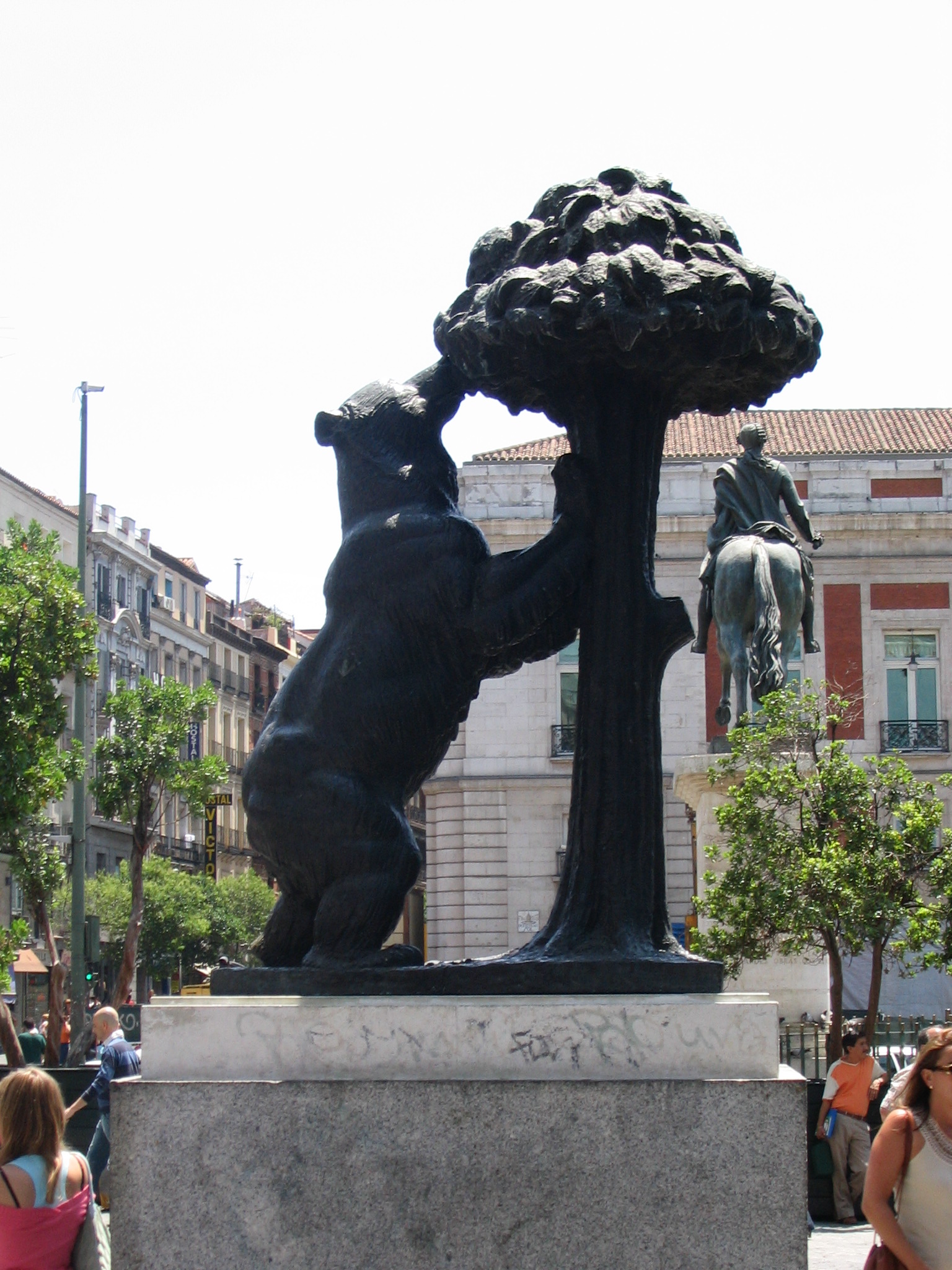|
Strawberry Tree (other)
Strawberry tree is a common name for: *'' Arbutus'', a genus in the family Ericaceae with edible red fruits **''Arbutus unedo'', the tree from which the genus ''Arbutus'' derives its name **''Arbutus andrachne'', known as Greek strawberry tree *'' Calycophyllum candidissimum'', in the family Calycophyllum *'' Cornus capitata'', a species of dogwood known as Himalayan strawberry-tree *''Muntingia calabura'', in the family Malvaceae, native to the American tropics *'' Myrica rubra'', in the family Myricaceae, referred to as the Chinese strawberry tree Other uses *Strawberry Tree (solar energy device) *Strawberry Tree (national symbol of Italy) ''Arbutus unedo'' is an evergreen shrub or small tree in the family Ericaceae, native to the Mediterranean region and western Europe. The tree is well known for its fruits, which bear some resemblance to the strawberry — hence the common name ... *'' The Strawberry Tree'', a 2011 Spanish-language experimental film See also * Strawberrie ... [...More Info...] [...Related Items...] OR: [Wikipedia] [Google] [Baidu] |
Arbutus
''Arbutus'' is a genus of 12 accepted speciesAct. Bot. Mex no.99 Pátzcuaro abr. 2012.''Arbutus bicolor''/ref> of flowering plants in the family Ericaceae, native to warm temperate regions of the Mediterranean, western Europe, the Canary Islands and North America. The name ''Arbutus'' was taken from Latin, where it referred to '' Arbutus unedo''. Description ''Arbutus'' are small trees or shrubs with red flaking bark and edible red berries.Mabberley, D. J. 1997. ''The plant book: A portable dictionary of the vascular plants''. Cambridge University Press, Cambridge. Fruit development is delayed for about five months after pollination, so that flowers appear while the previous year's fruit are ripening. Peak flowering for the genus is in April with peak fruiting in October. History The smooth wood of the tree is mentioned by Theophrastus in his ''Enquiry into Plants'' (''Historia Plantarum'') as formerly being used to make weaving spindles. An article on Arbutus tree cultivati ... [...More Info...] [...Related Items...] OR: [Wikipedia] [Google] [Baidu] |
Arbutus Unedo
''Arbutus unedo'' is an evergreen shrub or small tree in the family Ericaceae, native to the Mediterranean region and western Europe. The tree is well known for its fruits, which bear some resemblance to the strawberry — hence the common name "strawberry tree". However, it is not closely related to true strawberries of the genus ''Fragaria''. Its presence in Ireland also lends it the moniker "Irish strawberry tree", or cain, or cane apple (from the Irish name for the tree, ''caithne''), or sometimes "Killarney strawberry tree". The strawberry tree is the national tree of Italy because of its green leaves, its white flowers and its red berries, colors that recall the Italian flag. Taxonomy ''Arbutus unedo'' was one of the many species described by Carl Linnaeus in Volume One of his landmark 1753 work '' Species Plantarum'', giving it the name it still bears today. A study published in 2001 which analyzed ribosomal DNA from ''Arbutus'' and related genera found ''Arbutus'' ... [...More Info...] [...Related Items...] OR: [Wikipedia] [Google] [Baidu] |
Arbutus Andrachne
''Arbutus'' is a genus of 12 accepted speciesAct. Bot. Mex no.99 Pátzcuaro abr. 2012.''Arbutus bicolor''/ref> of flowering plants in the family Ericaceae, native to warm temperate regions of the Mediterranean, western Europe, the Canary Islands and North America. The name ''Arbutus'' was taken from Latin, where it referred to ''Arbutus unedo''. Description ''Arbutus'' are small trees or shrubs with red flaking bark and edible red berries.Mabberley, D. J. 1997. ''The plant book: A portable dictionary of the vascular plants''. Cambridge University Press, Cambridge. Fruit development is delayed for about five months after pollination, so that flowers appear while the previous year's fruit are ripening. Peak flowering for the genus is in April with peak fruiting in October. History The smooth wood of the tree is mentioned by Theophrastus in his ''Enquiry into Plants'' (''Historia Plantarum'') as formerly being used to make weaving spindles. An article on Arbutus tree cultivatio ... [...More Info...] [...Related Items...] OR: [Wikipedia] [Google] [Baidu] |
Calycophyllum Candidissimum
''Calycophyllum candidissimum'', the degami, dagame or lemonwood, is a species of flowering plant in the family Calycophyllum, native to southern Mexico, Cuba, Central America, Colombia, and Venezuela. It is the national tree of Nicaragua Nicaragua (; ), officially the Republic of Nicaragua (), is the largest Sovereign state, country in Central America, bordered by Honduras to the north, the Caribbean Sea, Caribbean to the east, Costa Rica to the south, and the Pacific Ocean to .... References Condamineeae Flora of Southwestern Mexico Flora of Central Mexico Flora of Veracruz Flora of Southeastern Mexico Flora of Cuba Flora of Central America Flora of Colombia Flora of Venezuela Plants described in 1830 Flora without expected TNC conservation status {{Cinchonoideae-stub ... [...More Info...] [...Related Items...] OR: [Wikipedia] [Google] [Baidu] |
Cornus Capitata
''Cornus capitata'' is a species of dogwood known by the common names Bentham's cornel, evergreen dogwood, Himalayan flowering dogwood, and Himalayan strawberry-tree. It is native to the low-elevation woodlands of the Himalayas in China, India, Pakistan, Nepal, and Bhutan. It is naturalized in parts of Australia and New Zealand, but is also grown elsewhere as an ornamental. This is an evergreen tree growing to 12 meters in height and width. The leaves are gray-green and pale and fuzzy underneath, and several centimeters long. It flowers during the summer in white blooms. The infructescence is a small aggregate of several individual fruits fused into a red body 2 or 3 centimeters across. It is edible but sometimes bitter. There are several varieties and hybrids. The species is naturalised in the states of New South Wales and Victoria in Australia. The common name ''Bentham's cornel'' derives from the alternative label ''Benthamia fragifera'', coined by John Lindley in honour ... [...More Info...] [...Related Items...] OR: [Wikipedia] [Google] [Baidu] |
Muntingia Calabura
''Muntingia'' is a genus of plants in the family Muntingiaceae, comprising only one species, ''Muntingia calabura'', and was named in honour of Abraham Munting. It is native to the neotropics, from Mexico south to Bolivia, with edible fruit, and has been widely introduced in other tropical areas. Description ''Muntingia calabura'' is a shrub or tree up to 12 m tall with spreading branches. The leaves are alternate, distichous, oblong or lanceolate, 4–15 cm long and 1–6 cm wide, with toothed margin and covered in short hairs. The flowers are small (up to 3 cm wide), solitary or in inflorescences of two or three flowers, with five lanceolate sepals, hairy, five obovate white petals, many stamens with yellow anthers, and a smooth ovoid ovary. Fruit, an edible berry, is red at maturity, about 1.5 cm wide. Distribution and habitat ''M. calabura'' is native to southern Mexico, the Caribbean, Central America, and western South America south to Bolivia and ... [...More Info...] [...Related Items...] OR: [Wikipedia] [Google] [Baidu] |
Myrica Rubra
''Myrica rubra'', also called yangmei (; Cantonese: yeung4 mui4; Shanghainese: ), , Chinese bayberry, red bayberry, yumberry, waxberry, or Chinese strawberry (and often mistranslated from Chinese as arbutus) is a subtropical tree grown for its fruit. Description ''Myrica rubra'' is an evergreen tree that grows to a height of up to high, with smooth gray bark and a uniform spherical to hemispherical crown. Leaves are leathery, bare, elliptic-obovate to oval lanceolate in shape, wedge-shaped at the base and rounded to pointed or tapered at the apex, margin is serrated or serrated in the upper half, with a length of and a width of . Leaves are alternately arranged on the branches are divided into petiole and leaf blade. The petiole is long. The leaf underside is pale green and sparsely to moderately golden glandular, the top surface is dark green. The species is dioecious. Male flowers with simple or unobtrusively branched bracts, are held in inflorescences individually or occa ... [...More Info...] [...Related Items...] OR: [Wikipedia] [Google] [Baidu] |
Strawberry Tree (solar Energy Device)
The Strawberry Tree is the world’s first public solar charger for mobile devices. It was developed by Serbia Serbia (, ; Serbian: , , ), officially the Republic of Serbia (Serbian: , , ), is a landlocked country in Southeastern and Central Europe, situated at the crossroads of the Pannonian Basin and the Balkans. It shares land borders with Hung ...n company Strawberry Energy. It won first place in the European Commission’s "Sustainable energy week 2011" competition in Brussels, in the category ''Consuming''. Functionalities Strawberry Tree is a solar and WiFi station which is permanently installed in public places such as streets, parks and squares, providing passersby with the opportunity to charge their mobile devices for free when they are outside. Its main parts are: * Solar panels that transform solar energy to electrical energy * Rechargeable batteries which accumulate energy and make Strawberry Tree function for more than 14 days without sunshine * Sixt ... [...More Info...] [...Related Items...] OR: [Wikipedia] [Google] [Baidu] |
Strawberry Tree (national Symbol Of Italy)
''Arbutus unedo'' is an evergreen shrub or small tree in the family Ericaceae, native to the Mediterranean region and western Europe. The tree is well known for its fruits, which bear some resemblance to the strawberry — hence the common name "strawberry tree". However, it is not closely related to true strawberries of the genus ''Fragaria''. Its presence in Ireland also lends it the moniker "Irish strawberry tree", or cain, or cane apple (from the Irish name for the tree, ''caithne''), or sometimes "Killarney strawberry tree". The strawberry tree is the national tree of Italy because of its green leaves, its white flowers and its red berries, colors that recall the Italian flag. Taxonomy ''Arbutus unedo'' was one of the many species described by Carl Linnaeus in Volume One of his landmark 1753 work ''Species Plantarum'', giving it the name it still bears today. A study published in 2001 which analyzed ribosomal DNA from ''Arbutus'' and related genera found ''Arbutus'' to be ... [...More Info...] [...Related Items...] OR: [Wikipedia] [Google] [Baidu] |
The Strawberry Tree
''The Strawberry Tree'' ( es, El árbol de las fresas) is a 2011 experimental film directed by Simone Rapisarda Casanova. The film premiered at the 2011 Locarno Film Festival. Subject A year after Hurricane Ike swept their village away, fishermen from Juan Antonio, Cuba, recall their vanished homes and daily lives. Their memories call forth images that had been shot just a few days before the devastation. However, the ethnographic documentary film that ensues is neither predictable nor conventional. For the filmmaker-ethnographer has rejected the use of scripts of any kind and has become entangled in a paradoxical dialogue with his subjects. The poor yet educated Cuban fishermen prove to be familiar with ethnography and documentary film techniques and continuously interact with the filmmaker. The traditional fly-on-the-wall paradigm is thus both defeated and rendered obsolete. Production Rapisarda Casanova’s stylistic hallmarks include his elliptical, metacinematic appro ... [...More Info...] [...Related Items...] OR: [Wikipedia] [Google] [Baidu] |



_(18149564851).jpg)

